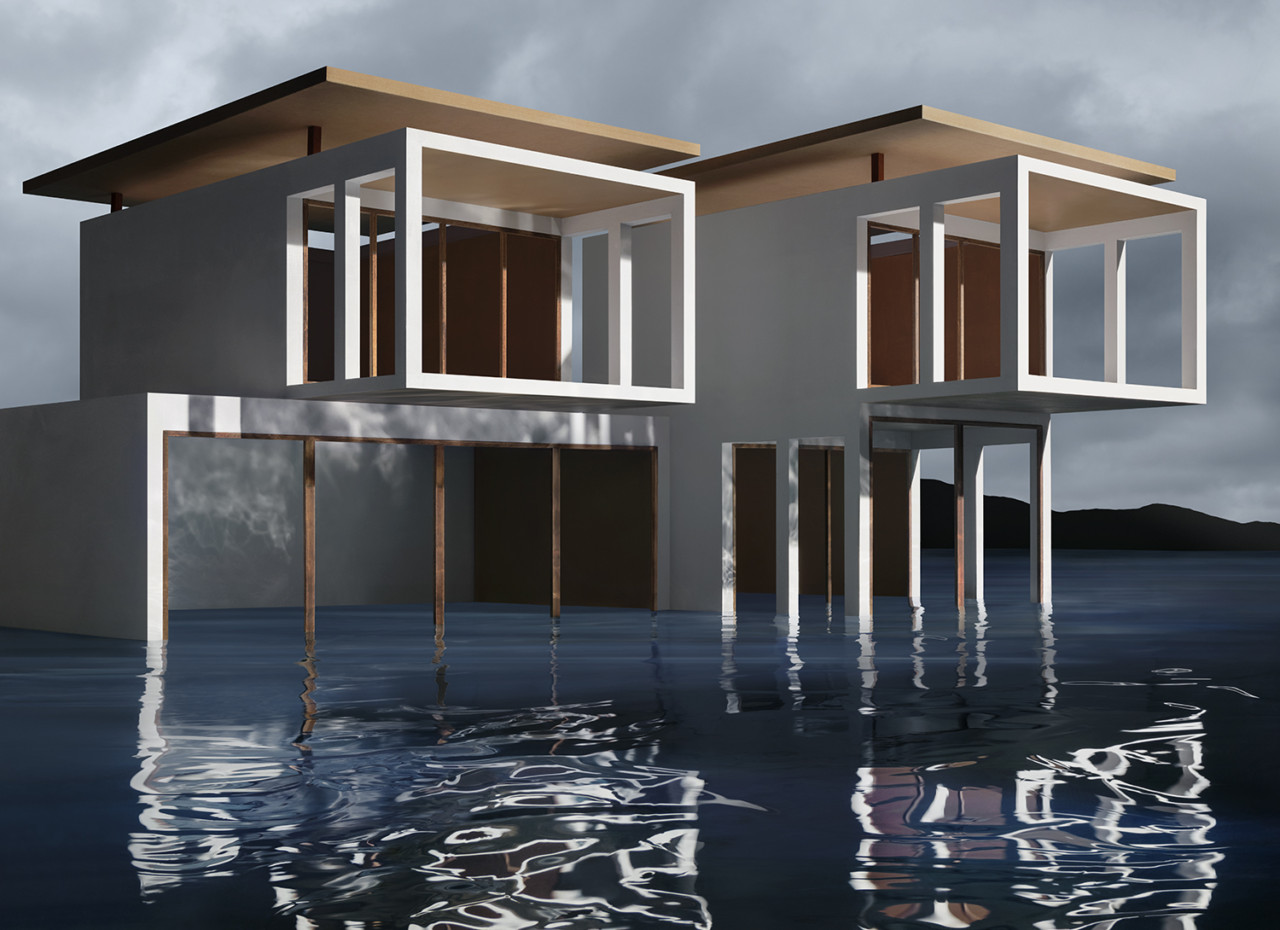


James Casebere, Santa Teresa White Duplex, 2019. Copyright of the artist, Courtesy Templon, Paris & Brussels
Sitting down to write this, I am conscious that my trip to Paris last weekend may be my last foreign travel for a while. Heck, it may be my last trip beyond the office for some time, depending on how things go…
Last Saturday the Marais was busy, everyone delighted to be out enjoying blue skies and sunshine that have been as rare there as they have been here. We began at Perrotin and a show of a new body of work by Daniel Arsham. The gallery was full of immaculate Parisians in carefully studied weekend outfits, the evidence of a little light boutique shopping dangling from their wrists.
The conceit of Arsham’s work is a future archaeology, and here we are presented with the ‘finds’ of a lucky archaeologist a thousand years from now. Where in the past Arsham has made sculptures based on recently obsolescent technology – harnessing the inherent pathos of chunky looking laptops or the fetishised retro-polaroid camera – here he has had access to the 200-year-old French moulding atelier at the Grand Palais (RMN).
Reproduced in disquieting dove greys, pale blues or pinks are masterpieces of antiquity: Roman busts of Lucius Verus and Caracalla; the Venus of Arles; an imposing, over life size figure of Moses. All have been subject to a process of erosion that reveals the crystallisation that a thousand years has wrought on the ancient sculptors’ works: the Venus de Milo with rose quartz; a panel depicting Nereids from a sarcophagus twinkles with blue calcite.
The semi-precious stones in combination with antique statuary inevitably call to mind Damien Hirst’s 2017 Venice spectacular, Treasures from the Wreck of the Unbelievable. Unlike that however, Arsham’s work exudes a sense of toxicity, the artificial colours and crystals are at once precious and mildly repellent, as if one had wandered into a cave of kryptonite.
Moving right along, we went next to David Zwirner gallery and Jordan Wolfson’s Artists, Friends, Racists, recently transferred from Sadie Coles in London. The first room of the gallery contains a group of wall-mounted works on brass panels, with photographs from the artist’s own childhood family albums. They are the most autobiographical works Wolfson has ever made and their vintage colours create a stark contrast to his more familiar, highly technological works.
In the large rear gallery, art students sat on the grey-carpeted floor to watch the work that gives the show its title. A wall of spinning fans with micro LEDs embedded in their blades creates the illusion of a holographic display. Animation, as well as still and moving film, flashes up in a relentless succession of images that dazzles and disturbs. At one point there is a hard-to-watch animated sequence in which two disembodied hands, gloved like an early Mickey Mouse, slap and abuse a puppy. You know your buttons are being pushed with this caricature of cruelty, but it is uncomfortable nonetheless.
While the fans whirr away with a drone that becomes increasingly menacing as it creeps into your consciousness, images of police cars, Dutch revelers in black face, Sesame Street characters and more flash up in multiples, with the judgement, or suggestion, or provocation: ‘racists’, ‘friends’, ‘artists’ dropping down in Flintstone letters. Wolfson’s is a jaundiced, and astringently unsentimental view of the world – dare I venture the thought he offers a visual corollary to Michel Houllebecq’s dystopian vision? Mordantly humorous – with a taste for violence and no fear of giving offence – but undeniably and incisively reflective of our time.
The third show was at Daniel Templon’s rue Beaubourg space, and a presentation of new work by the third American in Paris: James Casebere. Renowned for his peerless staged photographs, this new body of work presents us with a drowned world. The hyper-real serenity of each scenario belies the climate emergency implied, as each building sits partially submerged in still waters. In these days when self-isolation is the term at the forefront of everyone’s mind, these unpeopled scenes take on a chilling new resonance.
Where earlier work has recreated existing architectures, here Casebere has designed the structures himself. They stand alone on spindly pilotis, cool modernist villas against blue skies, or in small clusters with steep staircases rising out of the waters and a depthless starry sky behind. What at first appears affectlessly elegant, operates stealthily on the viewer so that collectively the images have a sobering, haunting quality.
Be well, everybody
Caroline Douglas
Director
Perrotin, 76 Rue de Turenne, 75003 Paris. Open Tuesday-Saturday 11.00-19.00. Exhibition continues until 21 March 2020. www.perrotin.com
David Zwirner, 108 Rue Vieille du Temple, 75003 Paris. Open Tuesday-Saturday 11.00-19.00. Exhibition continues until 21 March 2020. www.davidzwirner.com
Gallerie Templon, 30 Rue Beaubourg, 75003 Paris. Open Tuesday-Saturday 11.00-19.00. Exhibition finished on 7 March 2020. www.templon.com